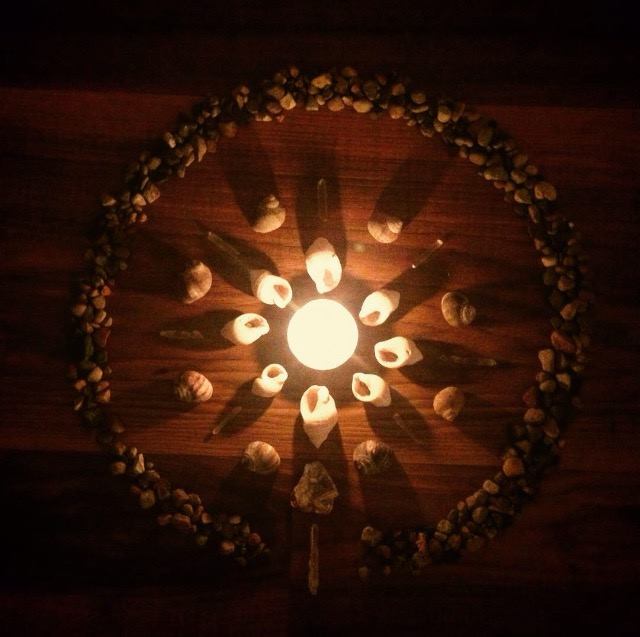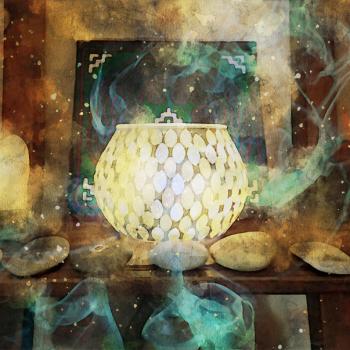I’ve been a tarot reader, a marketer, and a commissioned artist. I’ve realized that any time you’re doing creative work questions are key. I mean, after all, what is divination but creative narrative building using random sortilege? If you’re going to be able to build a good narrative, it helps to know what that narrative will be about. It will influence what kind of spread you choose, which meaning of the card will emerge, and help you tailor your words to your clients needs.
Forty percent of the work is teaching the client how to ask a good question.
Here’s some things I’ve learned over the years doing both paid and unpaid work for people:
Do not start the appointment with yes or no questions. That comes later. Pendulum work is great for such things. But when you’re building narrative with tarot readings, visual layouts, or brand names the answer is never black or white. Say the question back to the client and in your head can you answer yes, no, or maybe? Then they need to rephrase.
Get the client to talk about the situation. This is like those math story problems in high school. “What is the height of Timmy if the flagpole is at half mast and the sun is approximately 32.7 degrees above the horizon?” In this case, you have to suss out if they need to know about Timmy, the sun, or why the flagpole is at half mast. People often know that something’s wrong or that they are unclear about where they are going but haven’t thought through the details.
Repeat back what you’ve heard. That allows people to process their own words through their auditory brain. It gives them a chance to hear their own words and often they realize they didn’t communicate what they wanted to say.
Ask clarifying questions. This is one of the things that makes one an excellent reader of people versus a mediocre one. You need to be actively listening and thinking about what they’re saying. Look for emotional subtext in their bodies and breathing, look for logical fallacies or inconsistencies, and note what they don’t say as well as what they do. Don’t just blurt out what you notice, though. That can shut people down, and a lot of times you can jump to the wrong conclusion.

Make your questions open ended. Don’t tell them that they’re being irrational about their ex-boyfriend when they want to know if the tarot cards are going to tell them that he’s coming back. Instead, try to ask them why they want that thing. Your guess can often be wrong. Maybe it’s not love. Maybe it’s actually financial security. Maybe they just miss his dog. Maybe they think they ought to have a boyfriend but secretly dream of girls but they love their parents and don’t want to disappoint them, or maybe they just have this fantasy that a jerk will change his spots.
Speaking of obsession with a bad idea, sometimes people need help I can’t provide. It’s okay to suggest other professional support, like therapy, a doctor, or in the case of art commissions, a different artist whose style is more appropriate.
After the question has been agreed upon by the client and the reader then it’s important to let the cards speak. It’s your job as a reader to help the client know what it is they want to ask, and to know what the cards mean. You do create narrative, but it is built on the cards, not on what you think is the right answer. Likewise when I am doing mockups for a commissioned tattoo or marketing piece, it’s my job to be able to explain the design principles I’m using but in the end, I am creating artwork for someone else. It’s my job to channel spirit for that individual, not place my opinions or meaning on them.

Once you’ve shared the story the cards are telling make sure to ask the client if they need more clarification. Pendulum work to ask yes or no questions is excellent at this point, as long as you regularly work with your pendulum and are good at it. I also like using a five coin percentage flip. Sometimes it’s hard to tell how intense a reading is or how bad something is likely to be. I use five British 5 pence coins and flip them. By counting heads and tails I can get a percentage in 20% increments. One head up is only 20% likely or good, five up is 100% likely or good. I also find that by working in runes and ogham we can get overall feelings for the reading that emphasize various cards making the narrative outcomes clearer for the querent.
Even if the querent chooses not to ask a question and wants a “blind reading” that, in itself, is a clarification of the question. In that case you will be very literal and most of the narrative building will be up to the client. That’s great too, but you will only know if you ask. Always make sure to connect to your spirits and inner divinity before doing divination work, and I would highly suggest doing purification work both for yourself and your client beforehand as well.
Thanks so much for reading! I truly appreciate the opportunity to share my decades of experience with all of you, and I love to hear from readers who appreciate my priest work. If you’d like to help me continue to blog about how to build your priestwork practice from a dream into a reality, please consider signing up over at my Patreon. Thanks so much to everyone who is a Patreon, to the clients I’ve had, and to Tarot Study Group, which was a decade of friendship and learning.
















